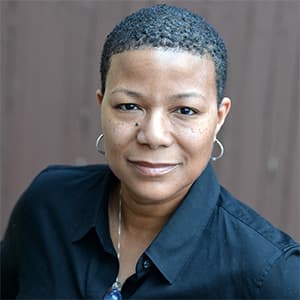

"You don’t have to be some kind of genius to crack the EP code—you must simply act, speak and appear in ways that set you apart as a leader,” says Sylvia Ann Hewlett, an economist, the CEO of Hewlett Consulting Partners and an award-winning author whose books include Executive Presence 2.0: Leadership in an Age of Inclusion.
The term executive presence has come under fire in recent years for conjuring an authoritarian management style, but it’s really about how we show up each day. Reflecting on what we can do to be the best versions of ourselves at work and elsewhere is a worthwhile endeavor, particularly for those who are newer to the role of association executive. New research conducted by Hewlett shows that cultivating executive presence is a game changer and can motivate members and staff alike to achieve association goals and priorities.
Being Heard and Understood
Hewlett describes executive presence as what we signal to the world in terms of our gravitas, which is our ability to get our ideas across and be heard, and how we present ourselves to the world. Leaders who have gravitas are respected for their seriousness and depth of ideas. Rebecca Newton, senior visiting fellow at the London School of Economics and Political Science, explains that having gravitas helps us to be more persuasive. Getting our ideas across and being heard require that we communicate strategically, keeping these facets top of mind: our target audience, how we will deliver our message and the best channel to convey our message. Being cognizant of how we present ourselves to staff and members demands that we pay attention to our body language, including our posture, gestures, facial expressions, eye contact and the level of confidence we project.
The PRES Model
Effective leadership begins with being present. Belle Halpern and Kathy Lubar, authors of Leadership Presence, define presence as the ability to grab people’s attention by connecting authentically with their thoughts and feelings and inspiring them toward a desired outcome. Using skills they developed as performers (Lubar was an actor and Halpern was a singer), they established the PRES Model of Leadership Presence. This model emphasizes being in the moment and flexible enough to manage the unexpected; building relationships through empathy; listening; establishing authentic connections; expressing our feelings and emotions appropriately using our words, voice, body and face; and living our values.
One of the biggest obstacles to being present is that voice in our heads that constantly judges our actions. Halpern and Lubar call it the “inner critic,” and it’s tricky. The good news is there are ways to manage so it doesn’t prevent us from achieving our goals. One suggestion they share that I will vouch for is writing a letter to your inner critic. The idea is to acknowledge it and get the thoughts out of your head and onto the page as a way of making peace with it.
Another challenge that gets in the way of being present is fear. Halpern and Lubar explain how fears of failure, of what others think and of not being good enough detract from our ability to be in the moment. They make the point that it’s not the fear that keeps us from being present, but the thoughts we attach to fear that create the problem. Their proven practices for overcoming fear include feeling yourself being grounded, breathing purposefully in the stomach, letting thoughts go and letting feelings be.
The Whole Package
Up to 90% of what we communicate is nonverbal, so whether you’re addressing members or staff:
- Be aware of your posture.
- Recognize whether you are coming across as relaxed or anxious.
- Use your hands the way you would in a casual conversation. The goal is to discover your natural style, letting your hands do whatever they would do if you were speaking to a friend. At the end of the day, you want to use your hands in a way that advances your message.
- Keep your face relaxed, interested and animated.
- Maintain eye contact with the other person so you make a connection.
An absolute key to using your voice, body and face to enhance your executive presence is to make sure all three are communicating the same message. If they are not, your credibility goes out the window.
The Evolution of Executive Presence
In “The New Rules of Executive Presence” in Harvard Business Review, January/February 2024, Hewlett explains how the traits within each category of executive presence (gravitas, communications skills and appearance) have evolved. Regarding gravitas, she notes that while confidence and decisiveness are still important, being inclusive and showing respect for others are equally valued. Maureen Frank, chief disruption officer at emberin in Australia and an inclusion and diversity expert, notes that being inclusive means being fair, showing respect and giving people the opportunity to help the organization succeed on their terms. Taking steps to make staff and volunteers feel supported in this way can inspire them to act in furtherance of the association’s mission.
According to Hewlett, communicating effectively today includes mastering virtual meetings and listening attentively. Successfully facilitating a virtual meeting takes preparation. Doing tech checks, being considerate of our audience and the different ways they learn and absorb information and speaking in a conversational tone go a long way, as do checking in with people who haven’t spoken and following up after the meeting with a summary of the actions taken. Honing our listening skills also pays dividends. It strengthens relationships and helps us to be more persuasive because we satisfy the other person’s desire to be heard. When we practice effective listening skills, we refrain from making assumptions, and we build connection with the other person. Coupled with asking the right questions, being generous with our time in this way will win the day every time.
When it comes to our appearance, Hewlett reports that authenticity has become a prized attribute.
“People feel you’re authentic when they know what you’re about and they see that you act in ways congruent with what you say about yourself. … People feel you are authentic when you don’t pretend to be someone you are not,” say Halpern and Lubar. They outline three rules for authenticity: 1. Being comfortable in your own skin and open to growth; 2. Living your values; and 3. Connecting with your work. Following these rules creates space to build trust and connection. There is no place to go from there but up.











